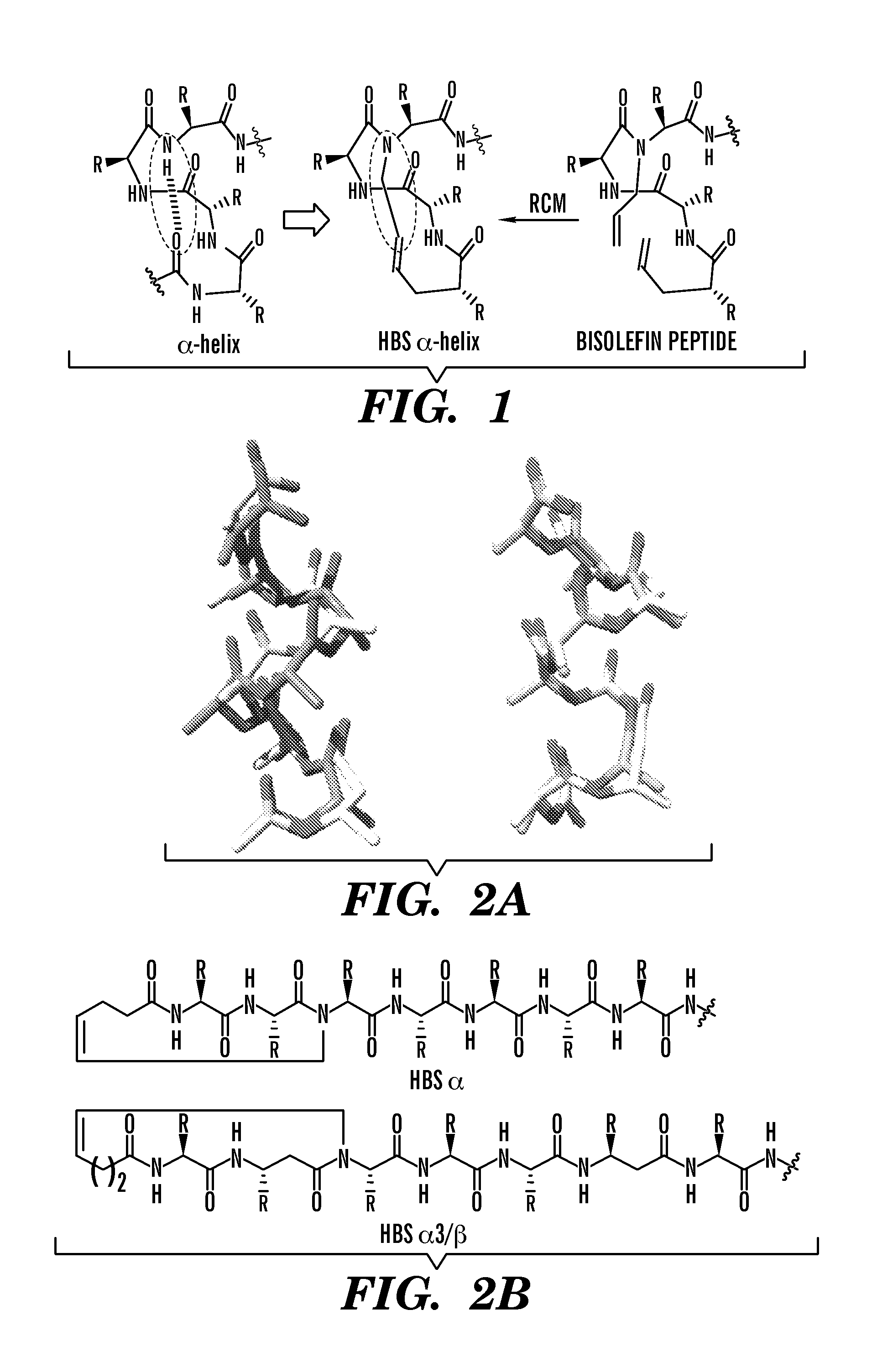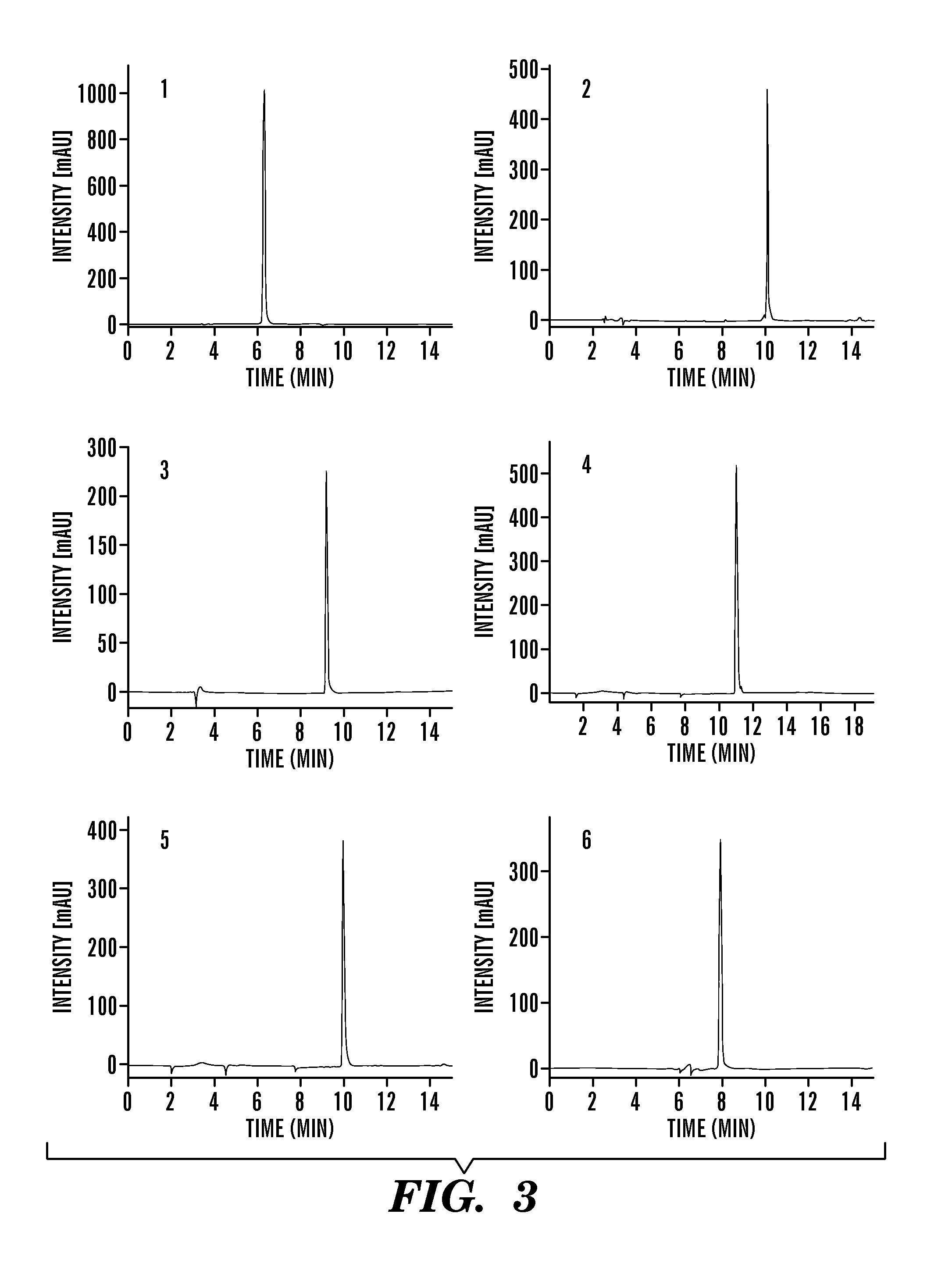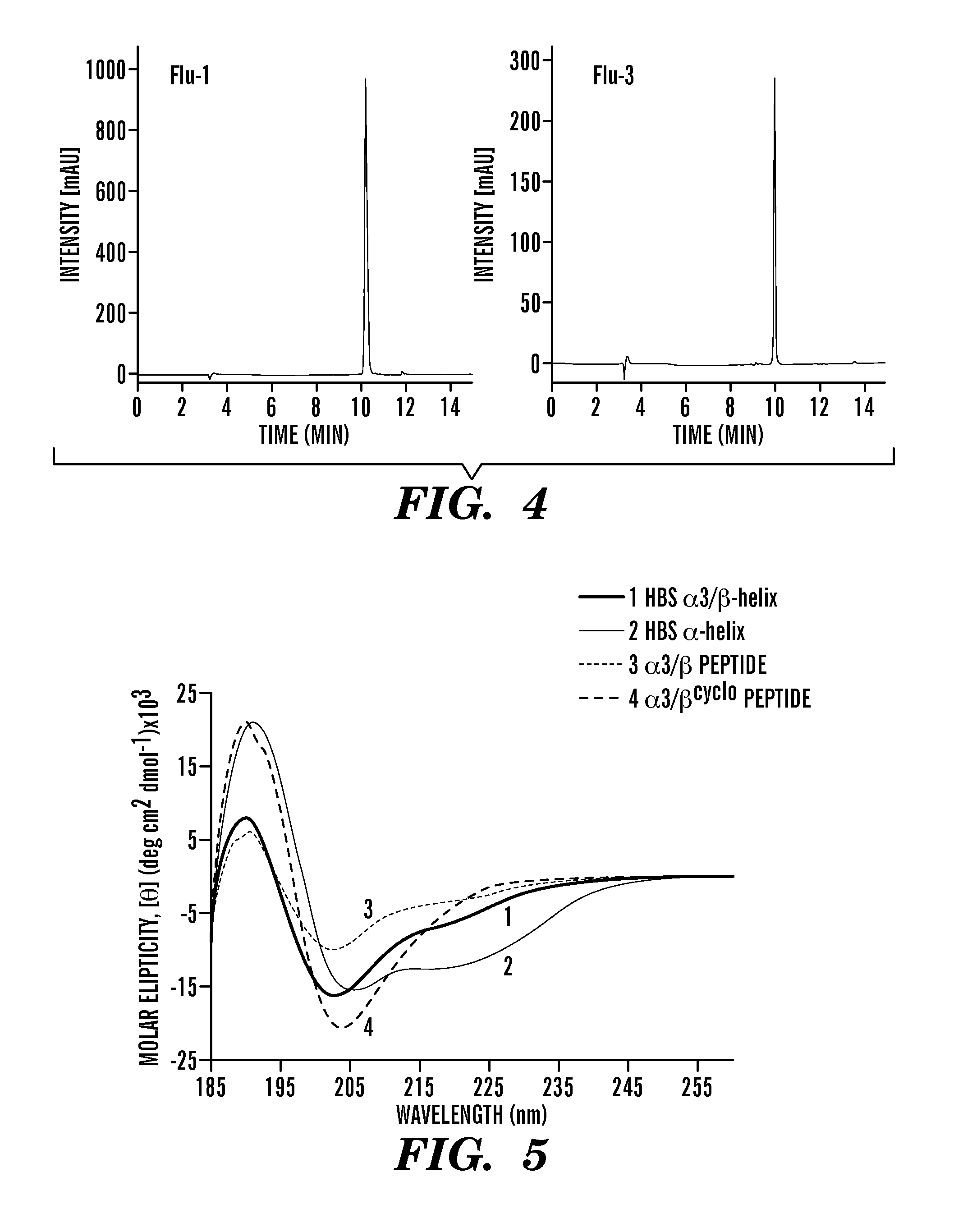Proteolytically resistant hydrogen bond surrogate helices
- Summary
- Abstract
- Description
- Claims
- Application Information
AI Technical Summary
Benefits of technology
Problems solved by technology
Method used
Image
Examples
example 1
General
[0238]Commercial-grade reagents and solvents were used without further purification except as indicated. Dichloroethane was distilled before use in the metathesis reactions. All reactions were stirred magnetically or mechanically shaken; moisture-sensitive reactions were performed under nitrogen or argon atmosphere. Reverse-phase HPLC experiments were conducted with 0.1% aqueous trifluoroacetic acid and 0.1% trifluoroacetic acid in acetonitrile buffers as eluents on C18 reversed-phase columns using a Beckman Coulter HPLC equipped with a System Gold 168 Diode array detector. ESIMS data was obtained on an Agilent 1100 series LC / MSD (XCT) electrospray trap. The microwave reactions were performed in the CEM Discover single-mode reactor with controlled power, temperature, and time settings. Proton NMR spectra of HBS peptides were recorded on a Bruker AVANCE 900 MHz spectrometer.
example 2
Synthesis of HBS Helices with β-Amino Acid(s) in the Macrocycle
[0239]HBS peptides 1, 2, 5, and Flu-1 were synthesized as shown in Scheme 1 and as described in U.S. Pat. No. 7,202,332 to Arora & Chapman; Chapman & Arora, Org. Lett. 8:5825-28 (2006); Dimartino et al., Org. Lett. 7:2389-92 (2005); Patgiri et al., Nat. Protoc. 5:1857-65 (2010); and Patgiri et al., Org. Biomol. Chem. 8:1773-76 (2010), each of which is hereby incorporated by reference in its entirety.
[0240]Briefly, peptide sequences up to the i+5th residue of the putative helix (peptide 11 in Scheme 1) were synthesized using Fmoc solid-phase chemistry on Rink amide resin on a CEM Liberty Series microwave peptide synthesizer.
[0241]N-allylation of the i+4th residue (peptide 12 in Scheme 1) was achieved over two steps by coupling of bromoacetic acid followed by an allylamine displacement reaction. Resin bound peptide 11 was treated with a solution of bromoacetic acid (20 eq), DIC (20 eq), and HOAt (10 eq) in DMF, and the mix...
example 3
Synthesis of 5-Carboxyfluorescein Labeled Peptides
[0246]HBS helices and unconstrained peptides containing C-terminal Cys residues were synthesized as described in Example 2 supra. After cleavage and purification, peptides were treated with 5-Iodoacetamidofluorescein (5-IAF, 5 eq) in 10 mM PBS (pH 7.4) for 2 hours at room temperature. The fluorescein conjugates were purified by reversed-phase HPLC (C18 column) (FIG. 4). The identity and the purity of the peptides were confirmed by ESI-MS (Table 1, supra).
PUM
| Property | Measurement | Unit |
|---|---|---|
| Time | aaaaa | aaaaa |
| Digital information | aaaaa | aaaaa |
| Cell death | aaaaa | aaaaa |
Abstract
Description
Claims
Application Information
 Login to View More
Login to View More - R&D
- Intellectual Property
- Life Sciences
- Materials
- Tech Scout
- Unparalleled Data Quality
- Higher Quality Content
- 60% Fewer Hallucinations
Browse by: Latest US Patents, China's latest patents, Technical Efficacy Thesaurus, Application Domain, Technology Topic, Popular Technical Reports.
© 2025 PatSnap. All rights reserved.Legal|Privacy policy|Modern Slavery Act Transparency Statement|Sitemap|About US| Contact US: help@patsnap.com



